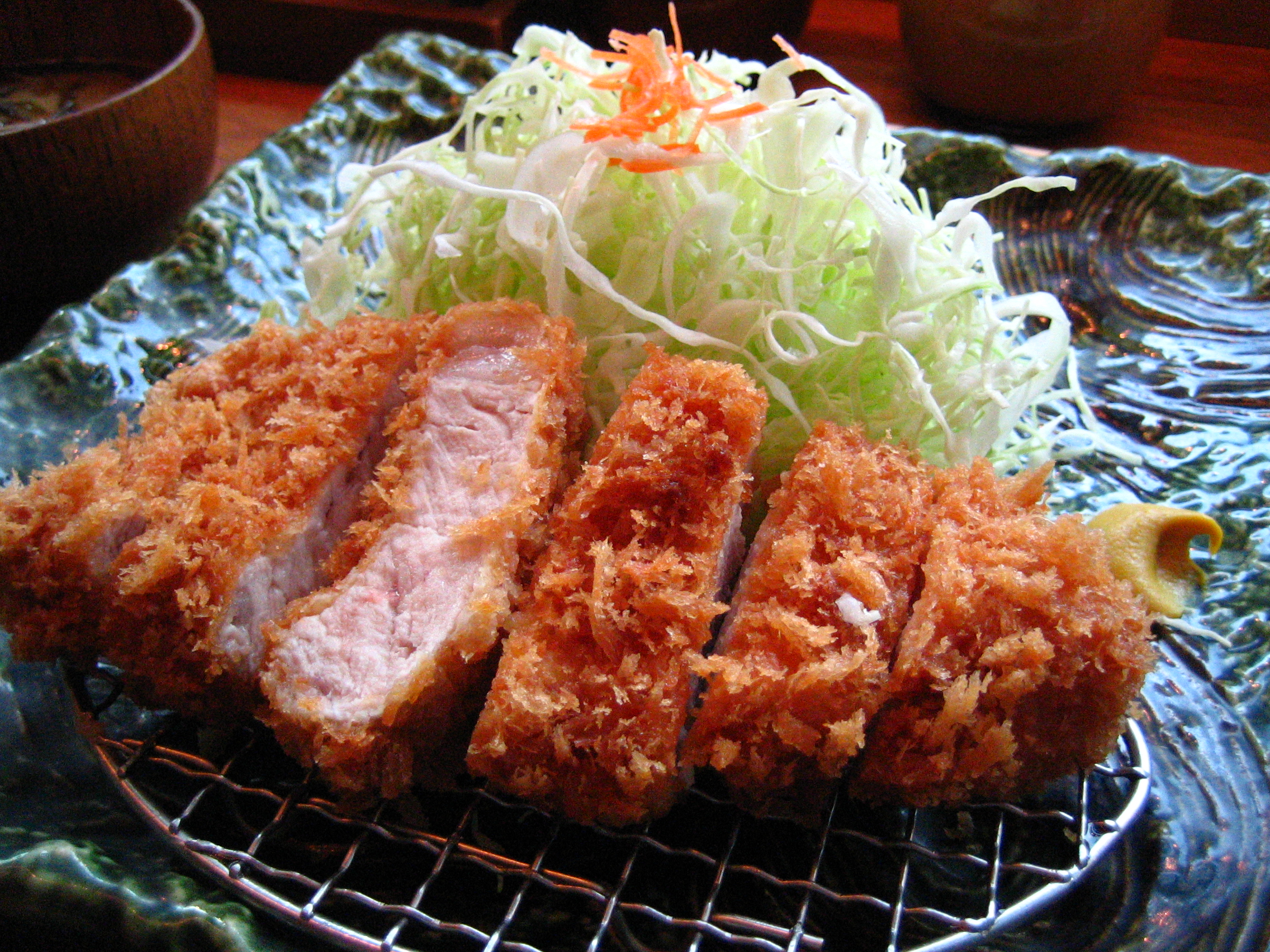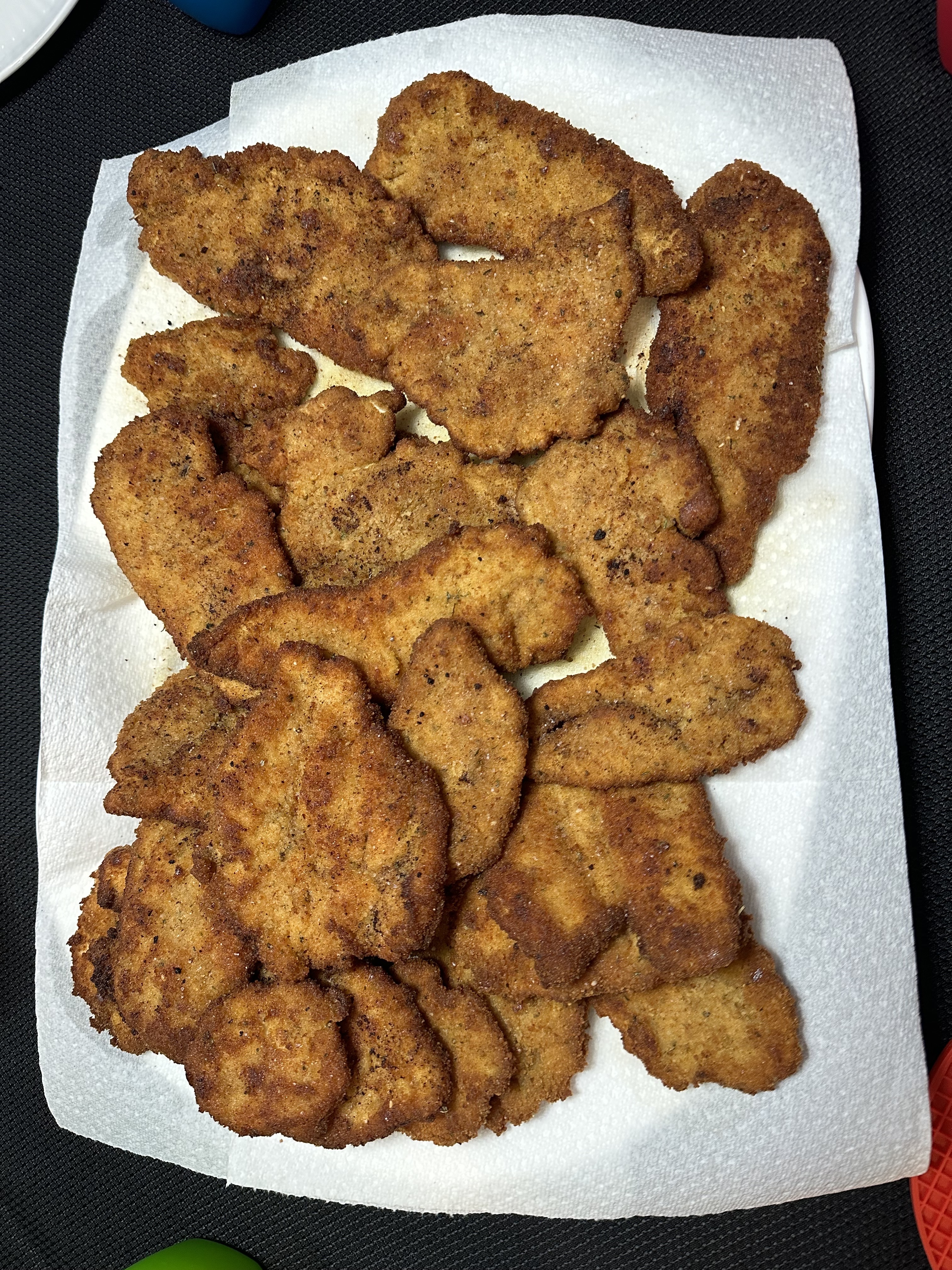|
Katsukarē
Katsu curry () is a Japanese dish consisting of (pork cutlet) served with Japanese rice and curry. It is served on a large plate and is typically eaten using a spoon or fork. The cutlet is usually precut into strips, eliminating the need for a knife. Generally eaten as a main course, the dish can be accompanied with '' fukujinzuke'' pickles and miso soup. In Japan, there are fast-food restaurant chains which specialize in serving katsu curry, with varying meats and types of curry. The pork cutlet can be substituted with chicken. In Japan, the name refers exclusively to a dish of curry served with a cutlet. However, in the UK, where the dish has become extremely popular in recent years, the name is sometimes erroneously applied to any type of Japanese curry, with the curry itself sometimes referred to as "katsu sauce".https://www.joe.co.uk/food/mcdonalds-announces-new-chicken-katsu-wrap-in-new-menu-lineup-469005 History There are three restaurants that are said to ha ... [...More Info...] [...Related Items...] OR: [Wikipedia] [Google] [Baidu] |
Japanese Cuisine
Japanese cuisine encompasses the regional and traditional foods of Japan, which have developed through centuries of political, economic, and social changes. The traditional cuisine of Japan (Japanese language, Japanese: ) is based on rice with miso soup and other dishes with an emphasis on seasonal ingredients. Side dishes often consist of fish, Tsukemono, pickled vegetables, tamagoyaki, and vegetables cooked in broth. Common seafood is often grilled, but it is also sometimes served raw as sashimi or as sushi. Seafood and vegetables are also deep-fried in a light batter, as '. Apart from rice, a staple includes noodles, such as soba and udon. Japan also has many simmered dishes, such as fish products in broth called , or beef in and . Historically influenced by Chinese cuisine, Japanese cuisine has also opened up to influence from European cuisine, Western cuisines in the modern era. Dishes inspired by foreign food—in particular Chinese food—like ramen and , as well as foods ... [...More Info...] [...Related Items...] OR: [Wikipedia] [Google] [Baidu] |
Breaded Cutlets
Breaded cutlet or braised cutlet is a dish made from coating a cutlet of meat with breading or batter and either frying or baking it. Breaded cutlet is known as ''schnitzel'' in German-speaking countries, ''cotoletta'' in Italy, ''escalope'' in France, ''filete empanado'' or '' cachopo'' in Spain, ''filete empanizado'' in Cuba, '' milanesa'' in Latin America, '' katsu'' in Japan and Korea, kotlet in Poland, ''řízek'' in the Czech Republic, ''rezeň'' in Slovakia and ''kotleta'' in post-Soviet countries. Chicken fingers Chicken fingers or chicken tenders are an American dish prepared by breading and deep frying the pectoralis minor muscle of the chicken, which is the smaller cut of the chicken breast located along its underside, attached to the ribs. Chicken-fried steak Chicken-fried steak (also known as country-fried steak) is an American breaded cutlet dish that may have originated with German and Austrian immigrants to Texas in the 19th century. It is a piece of bee ... [...More Info...] [...Related Items...] OR: [Wikipedia] [Google] [Baidu] |
Cutlet
In cuisine, cutlet (derived from French ''côtelette'', ''côte'', "rib") refers to: # a thin slice of meat from the leg or ribs of mutton, veal, pork, or chicken # a dish made of such slice, often breaded (also known in various languages as a ''cotoletta'', '' Kotelett'', ''kotlet'' or ''kotleta'') # a croquette or cutlet-shaped patty made of ground meat # a kind of fish cut where the fish is sliced perpendicular to the spine, rather than parallel (as with fillets); often synonymous with steak # a prawn or shrimp with its head and outer shell removed, leaving only the flesh and tail # a mash of vegetables (usually potatoes) fried with bread American and Canadian cuisines From the late 1700s until about 1900, virtually all recipes for "cutlets" in English-language cookbooks referenced veal cutlets. Then pork cutlets began to appear. More recently, in American and Canadian cuisine, cutlets have also been made using chicken, although this was also imported from Europe. The c ... [...More Info...] [...Related Items...] OR: [Wikipedia] [Google] [Baidu] |
Main Course
A main course is the featured or primary dish in a meal consisting of several courses. It usually follows the entrée () course. Usage In the United States and Canada (except Quebec), the main course is traditionally called an "entrée". English-speaking Québécois follow the modern French use of the term entrée to refer to a dish served before the main course. According to linguist Dan Jurafsky, North American usage ("entrée") comes from the original French meaning of the first of many meat courses. See also * Full course dinner References Bibliography * External links Wikibooks Cookbook Food and drink terminology Courses (food) {{food-stub tl:Ulam ... [...More Info...] [...Related Items...] OR: [Wikipedia] [Google] [Baidu] |
Tokyo
Tokyo, officially the Tokyo Metropolis, is the capital of Japan, capital and List of cities in Japan, most populous city in Japan. With a population of over 14 million in the city proper in 2023, it is List of largest cities, one of the most populous urban areas in the world. The Greater Tokyo Area, which includes Tokyo and parts of six neighboring Prefectures of Japan, prefectures, is the most populous metropolitan area in the world, with 41 million residents . Lying at the head of Tokyo Bay, Tokyo is part of the Kantō region, on the central coast of Honshu, Japan's largest island. It is Japan's economic center and the seat of the Government of Japan, Japanese government and the Emperor of Japan. The Tokyo Metropolitan Government administers Tokyo's central Special wards of Tokyo, 23 special wards, which formerly made up Tokyo City; various commuter towns and suburbs in Western Tokyo, its western area; and two outlying island chains, the Tokyo Islands. Although most of the w ... [...More Info...] [...Related Items...] OR: [Wikipedia] [Google] [Baidu] |
East Asian Curries
East is one of the four cardinal directions or points of the compass. It is the opposite direction from west and is the direction from which the Sun rises on the Earth. Etymology As in other languages, the word is formed from the fact that east is the direction where the Sun rises: ''east'' comes from Middle English ''est'', from Old English ''ēast'', which itself comes from the Proto-Germanic *''aus-to-'' or *''austra-'' "east, toward the sunrise", from Proto-Indo-European *aus- "to shine," or "dawn", cognate with Old High German ''*ōstar'' "to the east", Latin ''aurora'' 'dawn', and Greek ''ēōs'' 'dawn, east'. Examples of the same formation in other languages include Latin oriens 'east, sunrise' from orior 'to rise, to originate', Greek ανατολή anatolé 'east' from ἀνατέλλω 'to rise' and Hebrew מִזְרָח mizraḥ 'east' from זָרַח zaraḥ 'to rise, to shine'. ''Ēostre'', a Germanic goddess of dawn, might have been a personification of both da ... [...More Info...] [...Related Items...] OR: [Wikipedia] [Google] [Baidu] |
Japanese Rice Dishes
Japanese may refer to: * Something from or related to Japan, an island country in East Asia * Japanese language, spoken mainly in Japan * Japanese people, the ethnic group that identifies with Japan through ancestry or culture ** Japanese diaspora, Japanese emigrants and their descendants around the world * Japanese citizens, nationals of Japan under Japanese nationality law ** Foreign-born Japanese, naturalized citizens of Japan * Japanese writing system, consisting of kanji and kana * Japanese cuisine, the food and food culture of Japan See also * List of Japanese people * * Japonica (other) * Japanese studies , sometimes known as Japanology in Europe, is a sub-field of area studies or East Asian studies involved in social sciences and humanities research on Japan. It incorporates fields such as the study of Japanese language, history, culture, litera ... {{disambiguation Language and nationality disambiguation pages ... [...More Info...] [...Related Items...] OR: [Wikipedia] [Google] [Baidu] |
Meat And Rice Dishes
Meat is animal tissue, often muscle, that is eaten as food. Humans have hunted and farmed other animals for meat since prehistory. The Neolithic Revolution allowed the domestication of vertebrates, including chickens, sheep, goats, pigs, horses, and cattle, starting around 11,000 years ago. Since then, selective breeding has enabled farmers to produce meat with the qualities desired by producers and consumers. Meat is mainly composed of water, protein, and fat. Its quality is affected by many factors, including the genetics, health, and nutritional status of the animal involved. Without preservation, bacteria and fungi decompose and spoil unprocessed meat within hours or days. Meat is edible raw, but it is mostly eaten cooked, such as by stewing or roasting, or processed, such as by smoking or salting. The consumption of meat (especially red and processed meat, as opposed to fish and poultry) increases the risk of certain negative health outcomes including cancer, co ... [...More Info...] [...Related Items...] OR: [Wikipedia] [Google] [Baidu] |
Japanese Pork Dishes
Japanese may refer to: * Something from or related to Japan, an island country in East Asia * Japanese language, spoken mainly in Japan * Japanese people, the ethnic group that identifies with Japan through ancestry or culture ** Japanese diaspora, Japanese emigrants and their descendants around the world * Japanese citizens, nationals of Japan under Japanese nationality law ** Foreign-born Japanese, naturalized citizens of Japan * Japanese writing system, consisting of kanji and kana * Japanese cuisine, the food and food culture of Japan See also * List of Japanese people * * Japonica (other) * Japanese studies , sometimes known as Japanology in Europe, is a sub-field of area studies or East Asian studies involved in social sciences and humanities research on Japan. It incorporates fields such as the study of Japanese language, history, culture, litera ... {{disambiguation Language and nationality disambiguation pages ... [...More Info...] [...Related Items...] OR: [Wikipedia] [Google] [Baidu] |
Shigeru Chiba (baseball)
was a Japanese baseball second baseman who played with the Tokyo Kyojin/Yomiuri Giants from 1938 to 1941, and again from 1946 to 1956. He later managed the Kintetsu Buffalo from 1959 to 1961, and was elected to the Japanese Baseball Hall of Fame The , commonly known outside of Japan as the Japanese Baseball Hall of Fame, is a hall of fame and museum in Tokyo dedicated to professional baseball, with a prominent focus on professional baseball in Japan. The Hall is intended to honor and co ... in 1980. External links 1919 births 2002 deaths People from Saijō, Ehime Baseball people from Ehime Prefecture Japanese Baseball Hall of Fame inductees Japanese baseball players Managers of baseball teams in Japan Nippon Professional Baseball second basemen Nippon Professional Baseball third basemen Osaka Kintetsu Buffaloes managers Yomiuri Giants players 20th-century Japanese sportsmen {{Japan-baseball-second-baseman-stub ... [...More Info...] [...Related Items...] OR: [Wikipedia] [Google] [Baidu] |
Yomiuri Giants
The are a Japanese professional baseball team competing in Nippon Professional Baseball's Central League. Based in Bunkyo, Tokyo, they are one of two professional baseball teams based in Tokyo, the other being the Tokyo Yakult Swallows. They have played their home games at Tokyo Dome since its opening in 1988. The team's owner is The Yomiuri Shimbun Holdings, Japan's largest media conglomerate which also owns two newspapers (including the eponymous ''Yomiuri Shimbun'') and the Nippon Television Network System, Nippon Television Network (which includes flagship Nippon TV). The Giants are the oldest professional sports team in Japan. They are also by far the most successful, having won 22 Japan Series titles and an additional nine in the era of NPB's forerunner, the Japanese Baseball League. Their main rivalry is with the Hanshin Tigers, a team especially popular in the Kansai region. The Yomiuri Giants are regarded as "The New York Yankees of Japan" due to their widespread popul ... [...More Info...] [...Related Items...] OR: [Wikipedia] [Google] [Baidu] |






